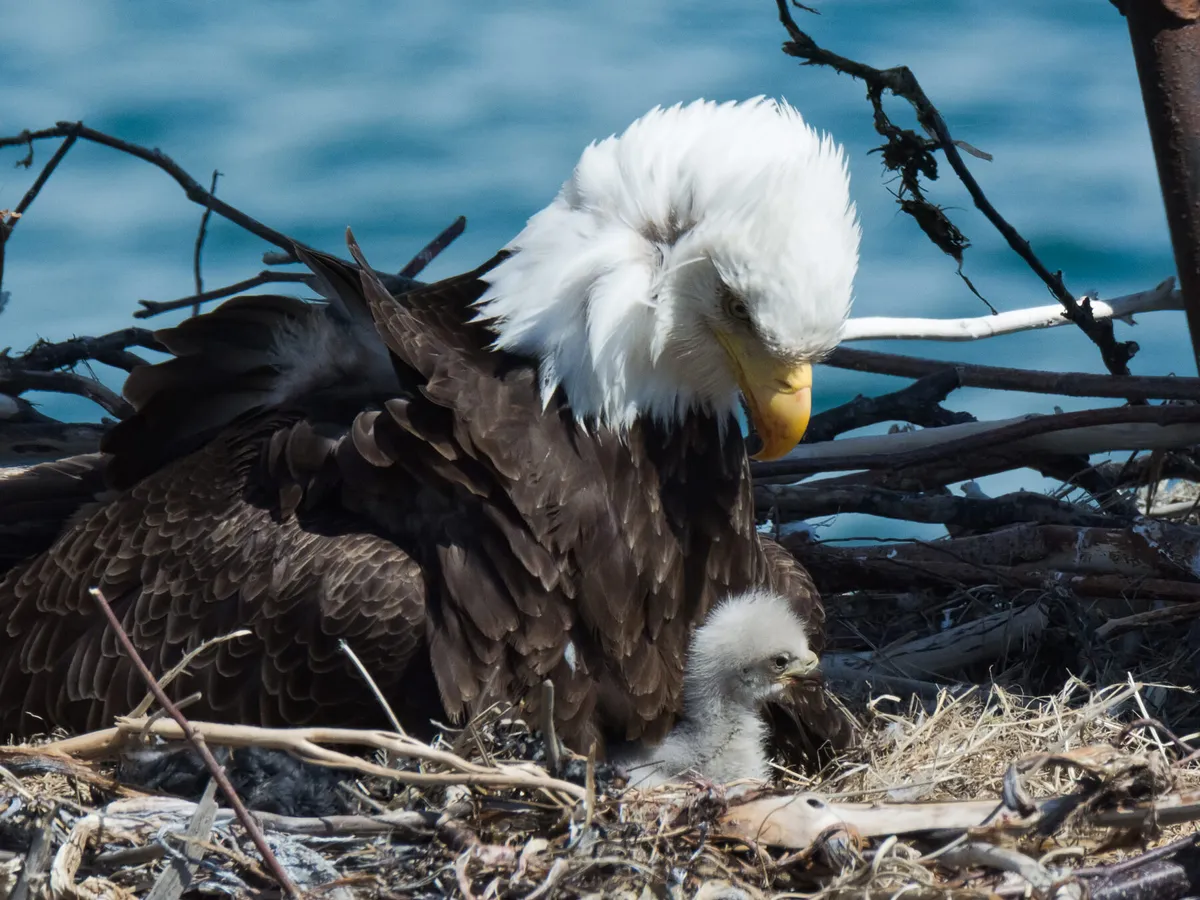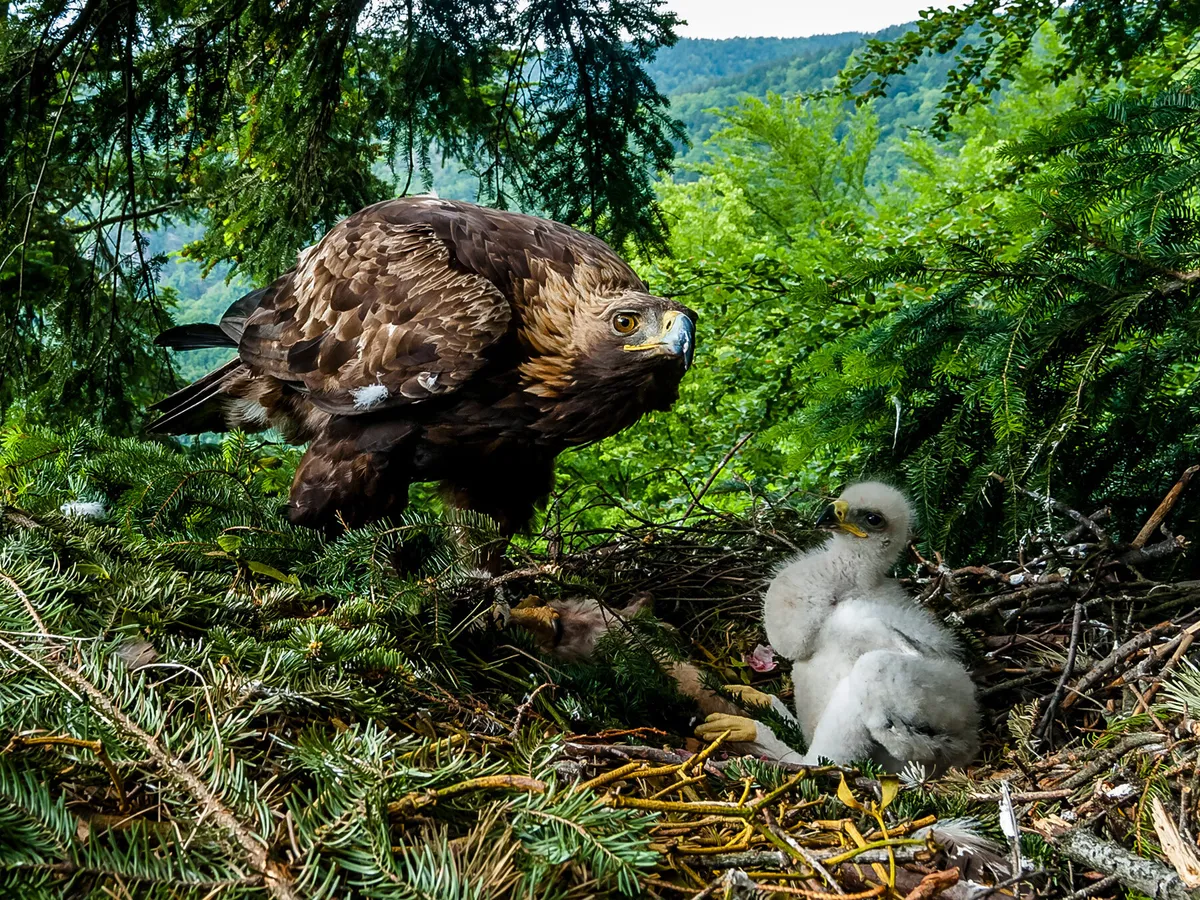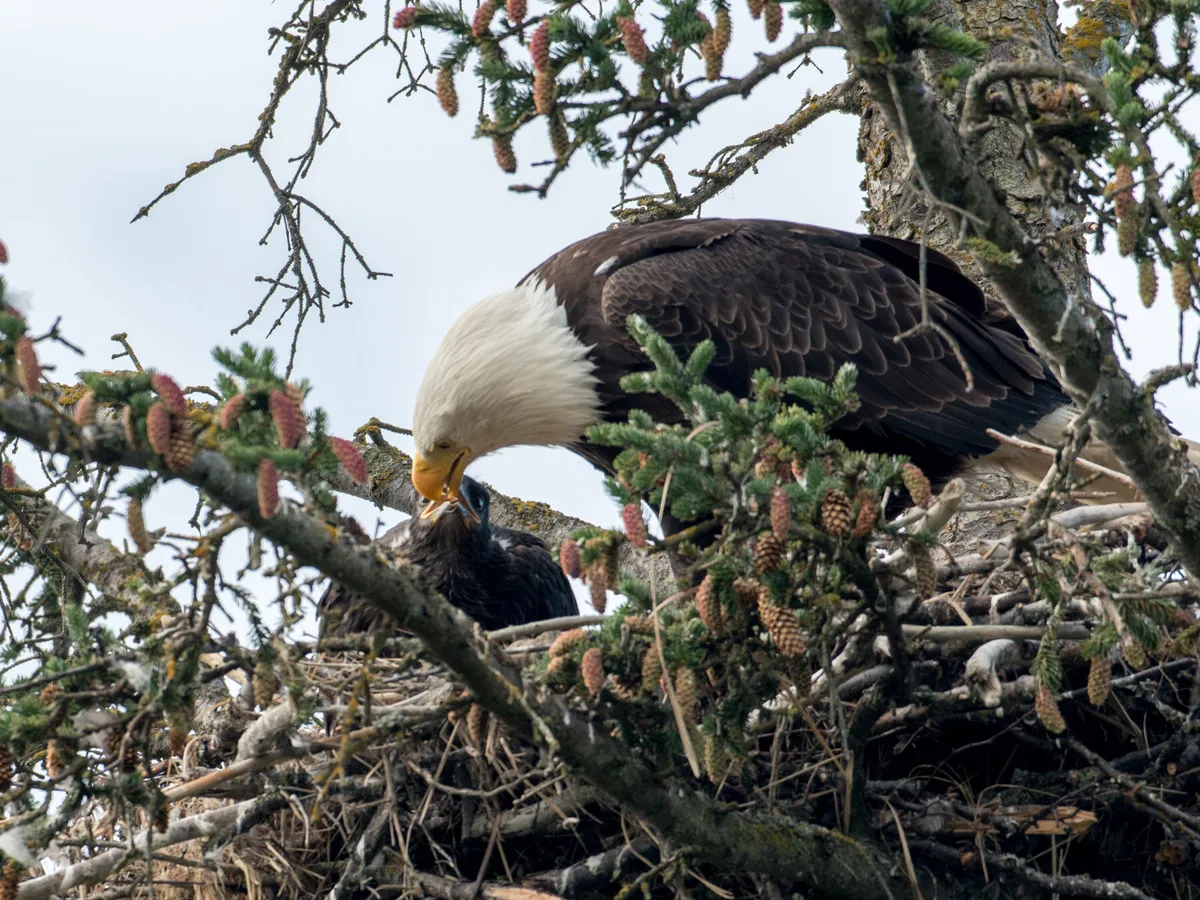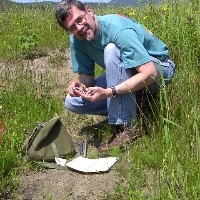What does the eagle look like?
How big is the kitty?
How much does the eagle weigh?
What does a baby eagle look like?
What is the name of the little eagle?
What is a flock of eaglets called?
What do eaglets eat?
How do eagles feed their chicks?
How long does it take for a baby eagle to grow up?
How many eaglets survive to adulthood?
What do eagle eggs look like?
How long does it take for an eagle egg to hatch?
When do eagles lay eggs?
How Often Do Eagles Lay Eggs?
When can the kitty fly?
When does the eaglet leave the nest?
How long does the eaglet stay with the parents?
How do eaglets learn to hunt?
Do eagles reuse nests?
Eagles are probably the most famous and widely known of all birds of prey. There are about 60 species of eagles worldwide, mainly in the Americas and Asia, many of which are important cultural icons and symbols.
Every mighty eagle begins life with a kitten – a young eaglet. This article will explore everything there is to know about baby eagles, and of course, there will be tons of pictures of baby eagles along the way!
What does the eagle look like?
Most young eaglets have thick, fluffy brown, gray or white undercoat. Probably the only way you’ll recognize them as a kitty is by their characteristic hooked beak. Otherwise, they look similar to many species of baby birds – fluffy, small, a bit prehistoric or dinosaur like!
Kitty eagles also have a very pronounced egg tooth, which is a special point on the front of the beak that is used to pierce the shell of an egg. Egg teeth only last about a week after hatching.

A baby bald eagle with their parents in their nest
How big is the kitty?
Given the size of many adult eagles, kittens are small. Even the largest eagles in the world, such as the giant harpy, produce young that are only a few inches long at birth.
Bald Eagle chicks are usually about 10 to 13 centimeters (4 to 5 inches) long after hatching.
How much does the eagle weigh?
Even for the largest hawk species, a young weighs only about 100 grams (3.5 ounces).
Golden eagle chicks have been found to weigh about 105 to 115 grams (3.7 to 4.1 oz). This is approximately 3 times the body weight of a chick and twice the body weight of a duckling. Young eagles are still very small and light for an adult-sized bird.

Golden eagle taking care of its chicks (kitten)
What does a baby eagle look like?
Despite reaching a sizeable size in as little as 2 months or so, young eagles are slow to reach adulthood. Full adult plumage can take up to 4 years to develop, and by this stage, young eaglets have long since grown to adult size and established their own independent territories.
Until at least 1 year of age, many young eaglets remain brownish or gray in color, with spotted plumage and tufts of down. Some species, such as golden eagles, retain patches of white feathers on their underbelly that disappear as adults.
For some species, such as the white-tailed eagle, adult plumage can take up to 8 years to develop! This is quite unique in the developmental timelines of other birds.

The Juvenile Golden Eagle Soaring in the Sky
What is the name of the little eagle?
A kitty is always called a kitty, regardless of the species. When a young eagle leaves the nest, it becomes a fledgling, just like any other fledgling.
What is a flock of eaglets called?
A flock of eaglets does not have a specific name, but a flock of eagles is often called a nest, soar, or rally.
What do eaglets eat?
The kittens were fed raw meat from day one. Instead of regurgitating their food, their parents simply tear the food into small pieces and feed them whole to the chicks. In the early days, it is mostly the father who hunts and feeds the chicks, but the mother may join in after a week or so or when food becomes scarce.

A bald eagle feeding their young with meat
How do eagles feed their chicks?
Adult eagles hunt food, tear it up, and feed it directly to chicks with their beaks. There is no regurgitation process like in other birds – the chick swallows the meat whole. Kittens are usually fed around 1 to 8 times a day, with larger chicks usually having preference over smaller chicks and thus more likely to survive to adulthood.
How long does it take for a baby eagle to grow up?
Kitty grows fast. By the time they are ready to plumage after 10 to 14 weeks, many have reached skeletal maturity. Some species take longer to reach adult size and weight, but only around 4 to 6 months at most.
Juvenile eagles continue to gain muscle mass for a year or more, and in some species, such as the white-tailed eagle, full plumage can take up to 8 years to develop!

Mommy is taking care of a young golden eagle chick
How many eaglets survive to adulthood?
Most eagles lay only 2 eggs, up to 4. In general, the survival rate is unlikely to exceed 50%, and usually the firstborn kittens survive.
This is because they eat faster and tend to be larger. If the food is particularly abundant, it is possible for a pair of eagles to raise three chicks, but this is still rare.
What do eagle eggs look like?
Eagle eggs are usually white, sometimes tinged with pale pink, often with light brown spots.
They are usually inconspicuous, but eggs of larger hawks can reach a size of 7 to 7.6 cm (2.7 to 3 inches). This is somewhat similar to the circumference of a baseball or tennis ball. Eagle eggs are quite large compared to the relatively small kitty.

two eagle eggs in nest
How long does it take for an eagle egg to hatch?
This does vary by species, but generally speaking, eagle eggs take about 35 days to hatch.
Golden eagle eggs take slightly longer, up to 45 days. Harpy eagle eggs incubate for about 55 days before hatching. That’s above average for birds, although it doesn’t compare to birds like the albatross, whose eggs can take up to 85 days to hatch!
When do eagles lay eggs?
This varies by species and region. For example, in northern latitudes including the United Kingdom, northern Europe, Canada and the northern states of the United States, spawning typically begins around March and April. Near the equator, spawning may occur throughout early winter, and in some areas as early as November.
Some eagles, such as the crested eagle, lay eggs year-round, but there is still a peak season. Being close to the equator, spawning is possible at any time of the year.

Close-up of a crowned eagle
How Often Do Eagles Lay Eggs?
While most eagles lay a small clutch of eggs each year, many eagle species have longer breeding cycles. Some species, such as the harpy, only lay eggs every 3 to 5 years. Crown eagles are similar and lay eggs every 2 to 3 years.
When can the kitty fly?
Young eagles develop their wings after about 10 to 14 weeks. Their parents will encourage them to fly and leave the nest, but they will not become more independent for at least 2 to 3 months, and possibly longer for some species.
For example, Crowned Eagle and Harpy Eagle kittens stay with their parents for as long as 9 to 10 months, which is why their breeding cycles are so long.

An immature bald eagle in flight
When does the eaglet leave the nest?
It depends on the species of eagle, but most kittens will fledge in about 14 weeks. However, that doesn’t mean they’ve actually left the nest. Although baby eaglets are somewhat independent from their parents at just 3 to 4 months, if they are born later in the season, many eaglet babies will stay with their parents until the following winter or next spring.
How long does the eaglet stay with the parents?
This does vary by species. For example, white-tailed eagles fly quickly, usually learning to fly after six weeks. However, a young eagle may not leave its family territory for up to three years.
Crowned eagles have a particularly long breeding cycle, as chicks have been known to spend at least ten months with their parents, after which they do not leave the family territory for some time.
Although many species of eagles spend time with their parents, chicks, or juveniles, are themselves ready to hunt after about 16 weeks, shortly after they have fledged.

juvenile white-tailed eagle
How do eaglets learn to hunt?
Like many other birds of prey, eaglets have natural hunting skills that develop quickly. While they do observe and learn from their parents, most species of hawks are ready to hunt shortly after leaving the nest.
After just 3 to 4 weeks, the chicks will tear and eat their own food – the parents will simply dump the prey in the nest and let them keep eating.
Do eagles reuse nests?
The eagle’s nest is large and dense, and is usually densely built over a period of up to six months. In an emergency, eagles can rebuild their nest within a few weeks, but it is definitely preferable for them to have a large, strong and stable nest that can be maintained year-round.
Paired hawks spend a lot of time looking for ideal nesting spots — they’re not opportunistic nesters. Once they have built their nest, most species of hawks maintain it religiously, constantly replenishing it with new material. Some eagle’s nests can be up to 3 meters (9 ft) in diameter and 3 to 5 meters deep.
Expert Q&A
question
When are bald eagle chicks usually born?
The BirdFact team
It basically depends on where the vultures are nesting. The general rule is that the higher the altitude, the later the nesting and spawning will be.
Bald eagles in Florida, for example, lay their eggs from October through April. In Arizona, bald eagles start spawning in January and usually stop by mid-February.
Hope our bald eagle nesting article can help more!
ask a question
Do you have a question on this topic that we haven’t answered yet? Submit below and one of our experts will reply as soon as possible.

I am broadly interested in how human activities influence the ability of wildlife to persist in the modified environments that we create.
Specifically, my research investigates how the configuration and composition of landscapes influence the movement and population dynamics of forest birds. Both natural and human-derived fragmenting of habitat can influence where birds settle, how they access the resources they need to survive and reproduce, and these factors in turn affect population demographics. Most recently, I have been studying the ability of individuals to move through and utilize forested areas which have been modified through timber harvest as they seek out resources for the breeding and postfledging phases. As well I am working in collaboration with Parks Canada scientists to examine in the influence of high density moose populations on forest bird communities in Gros Morne National Park. Many of my projects are conducted in collaboration or consultation with representatives of industry and government agencies, seeking to improve the management and sustainability of natural resource extraction.











